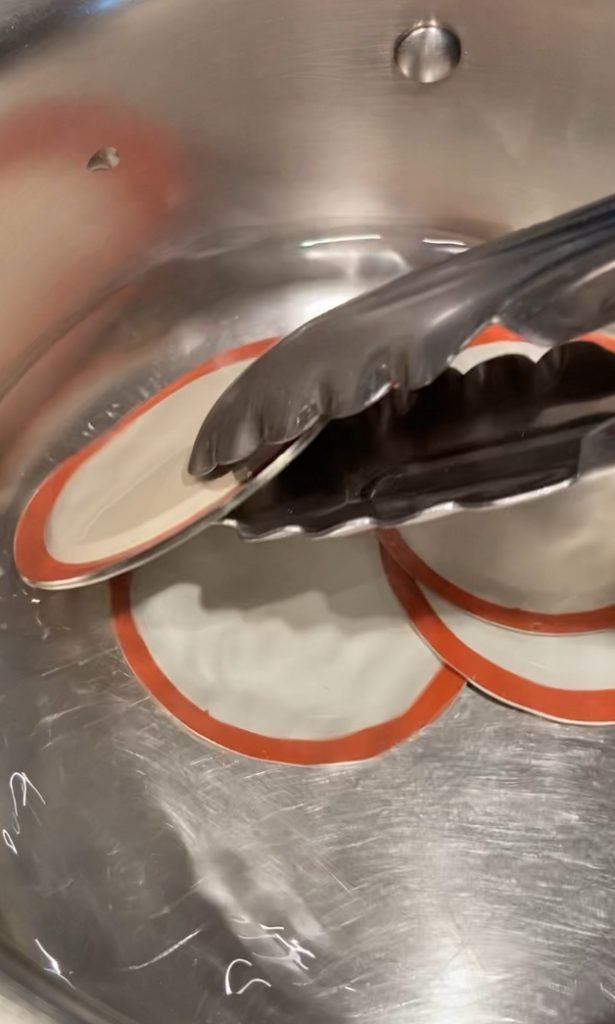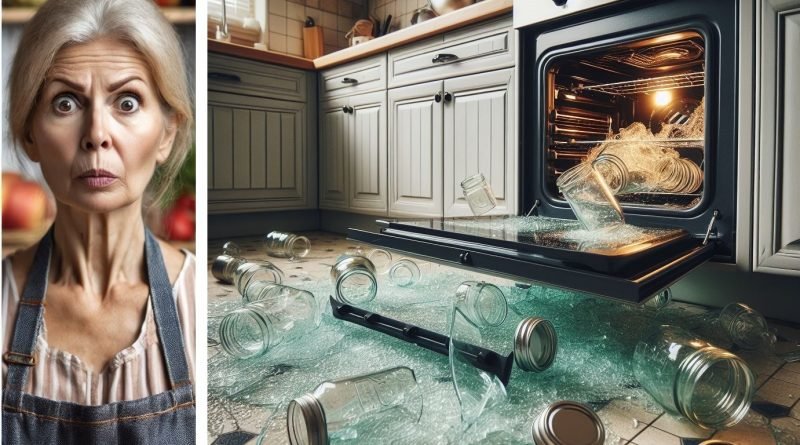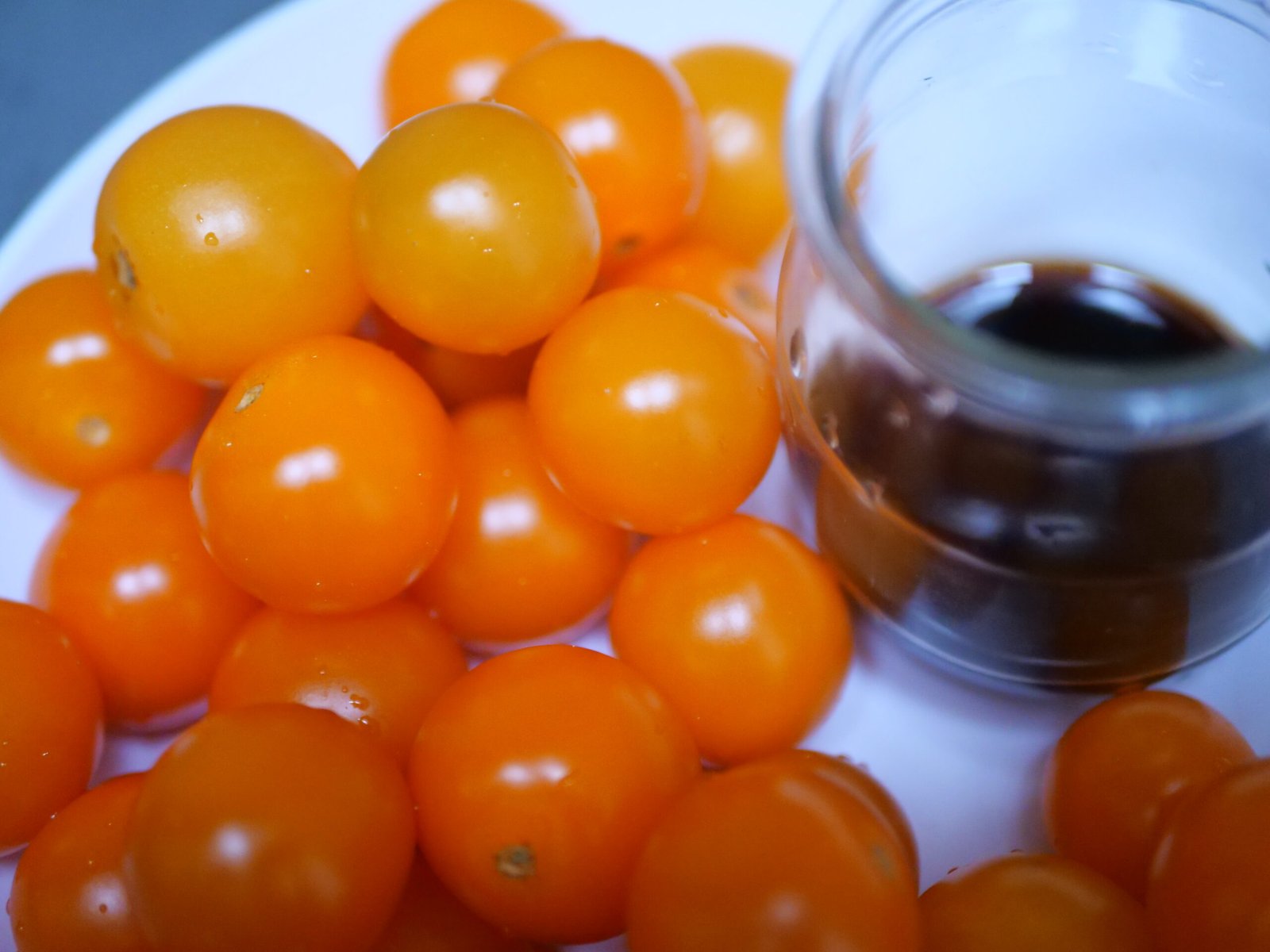How To Safely Sterilize Mason Jars And Lids For Canning
Views: 805
Do you need to sterilize mason jars?
Sterilizing mason jars is a critical step in the canning process. It serves the purpose of ensuring the safety, quality, and longevity of the preserved food. But first, let’s clearly define what we mean by “sterilization” of mason jars. In this article, we call “sterilization” the process of killing or inactivating the bacteria, moulds, yeast, and other microorganisms present on the surfaces of the unfilled jars. This same process is referred to as pre-sterilization by the National Center for Home Food Preservation. We strongly advise sterilizing your jars irrespective of the canning method you use or the length of time your preserve will be in the water bath canner or atmospheric steam canner. If you use open kettle canning, this step is absolutely critical to the safety of your preserves. Make sure not to put your hands inside the sterilized jars to prevent bacteria from transferring in.
Do you need to sterilize new mason jars?
Should you sterilize new mason jars for canning? Understandable question. After all, these jars are brand new, so where would the bacteria come from? Yet, even in their pristine state, fresh from production, these mason jars are not sterile. Even though the manufacturing process aims to produce clean and sanitary jars, these jars will still have contaminants such as dust, debris, or residues from the manufacturing and packaging process. Both the plastic used for wrapping up the boxes of mason jars and the cardboard packaging, while protective, are not sterile by design.

How to clean and sterilize mason jars?
Whether your jars are straight out of the packaging or have been around the canning block a few times, giving them a good scrub right before loading up with preserves is a must. Throw them in the dishwasher for a hassle-free approach, or go hands-on with detergent and a thorough rinse. It is important to remember that this is just a cleaning step.
To achieve thorough sterilization, immerse the jars in boiling water for a predetermined period of time (boiling water method). Alternatively, place the jars upside down on a steam insert over the boiling water, a technique known as the atmospheric (moist) steam sterilization method.
How long should you sterilize mason jars?
For effective sterilization in boiling water, allocate a minimum of 10 minutes for the sterilization process. Increase the sterilization time by 1 minute for every additional 1,000 feet of elevation. Alternatively, using the atmospheric steam sterilization method, we advise moist-steaming the jars for a duration ranging from 15 to 20 minutes.
How to sterilize mason jars in boiling water?
For the boiling water method of sterilizing jars, arrange the cleaned jars upright on a rack within the canner. Fill both the jars and the canner with water, ensuring it reaches 1 inch above the jars. Slowly bring the water to a boil. Subsequently, let it boil for 10 minutes at 1,000 feet elevation, adding an extra minute per additional 1,000 feet. When it’s time to fill, remove the jars individually, pouring out any water.
How to sterilize mason jars using atmospheric (moist) steam sterilization method?

Moist heat sterilization is a technique widely used in hospitals for reusable medical equipment. It is also an extremely popular jar sterilization method favoured in several European countries by home canners due to this method’s simplicity.
To sterilize jars using this method, first place the steaming rack in or over the canner. Fill the canner with enough water so it doesn’t touch the steaming rack and has enough of water to last for 20 minutes of boiling. Bring the water to a boil. Then, put the clean jars upright on the steaming rack. Make sure the jar mouths face the boiling water. Start the timer. Observe the steam accumulating inside the jars and forming water droplets. Let the jars steam for 20 minutes.
Can I sterilize mason jars without a canner?
Yes, you can sterilize mason jars without a canner. If you choose to sterilize using boiling water, any large pot will do, but you’ll need an insert to keep the jars off the pot’s bottom.
If you want to do moist heat sterilization but don’t own an atmospheric steam canner, you can sterilize jars by means of placing a steaming insert inside or over any pot of a suitable size. With this approach, there’s no need to submerge jars in water, allowing you to use a more convenient and compact pot.
Safety concern with mason jar sterilization in the oven
In the past, the use of ovens for canning and sterilizing jars was a popular choice. However, by the time World War II came to an end, it was considered one of the riskiest methods. Ever wondered why?

Warnings about the dangers of oven canning were highlighted in newspaper articles. For instance, an article in the Chanute Times, titled “Burned by Exploding Fruit Jar”, described a victim as “terribly burned,” and fearing eyesight loss (Burned by Exploding Fruit Jar, 1908). During World War II, the New York Times issued warnings like “Home Canners Advised: Safety Council Cautions on Use of Oven Method”, and “Oven Canning Method Found Most Unsafe: 80% of Accidents Last Year in Home Preserving Laid to It” (Home Canners Advised, 1946 and Oven Canning Method Found Most Unsafe, 1944). In 1945, the National Safety Council and USDA produced a radio skit titled “Taylor-Made Safety,” discussing the risks of oven canning, including a character’s complaint about narrowly avoiding an oven door mishap while canning—it flew right by her!
Can you sterilize mason jars in the oven?
If you’re unfazed by the idea of the cans exploding in the oven, consider these facts before you pop your mason jars in the oven and practice mason jar oven sterilization.
Mason jars manufacturer Bernardin says this about sterilization in the oven:

Although mason jars can withstand repeated heating and cooling, they are sensitive to quick temperature changes. Sudden cooling or heating can cause thermal shock and result in breakage. Jars heat unevenly due to dry heat and temperature fluctuations inside the oven. This may be too drastic for the jars.

Let’s unpack the statement of this manufacturer one by one:
- Uneven Heating: The nature of household ovens is such that they do not distribute heat evenly, leading to hot spots. This can result in some parts of the jar reaching a much higher temperature than others, leading to the creation of micro-fractures which increases the risk of breakage.
- Thermal Shock: Glass can break when subjected to rapid temperature changes. Placing cold jars in a hot oven can lead to a thermal shock, causing the glass to crack or shatter.
- Inconsistent Temperatures: Household ovens might not provide accurate temperature control. Sterilization often requires specific temperatures to effectively kill bacteria and other microorganisms, and if the oven’s temperature is not precise, it may not achieve the desired level of sterilization.
Can you sterilize mason jars in the dishwasher?
We understand why this question comes up. Meaning, why would they call the dishwasher’s cycle “sanitize,” right? However, the devil is in the details. Specifically, it’s about the maximum temperature the dishwasher can reach in its sanitized mode versus the temperature needed to sterilize mason jars for canning.
Dishwashers in sanitizing mode typically aim for temperatures between 150°F to 160°F (65°C to 71°C) during the final rinse. Unfortunately, this falls short of the temperature required for sterilization, which must always be 212°F (100°C) or higher and maintained throughout the entire sterilization period.
Can you sterilize mason jars in the microwave?
Did you realize that your regular household microwave doesn’t actually get hot when heating? The way the microwave works is that it heats the moisture inside the food item, raising its temperature. Remember those cool-to-touch microwave-safe dishes with hot soup? It’s not the microwave getting hot inside; it’s just the soup’s temperature rising. Heating an entire mason jar to the minimum required temperature of 212°F (100°C) or higher with a microwave isn’t feasible due to how microwaves function.
For those who get inventive and attempt to sterilize jars by filling them with water and microwaving, we strongly discourage it for several reasons:
- Lack of Temperature Control: Microwaves lack the precise temperature control necessary for proper sterilization. Maintaining the specific temperatures required for sterilization is an impossible task.
- Limited Penetration: Microwaves primarily heat the jar’s contents, and their effectiveness diminishes with distance from the surface. This limited penetration may leave some areas insufficiently sterilized, compromising the overall effectiveness of the process.
Can you sterilize mason jars in an instant pot?
Achieving sterilization for mason jars relies on exposing them to moist heat at a minimum temperature of 212°F (100°C) or higher. Although we haven’t personally tried an Instant Pot for sterilization, considering the maximum temperatures it can reach—ranging from 115°C (239°F) in older models to 143°C (260°F) in newer ones—sterilization in an instant pot appears feasible. However, our primary apprehension with this method lies in the potential difficulty of precisely controlling the temperature needed for proper sterilization throughout the entire Instant Pot process.
Can I sterilize mason jars with bleach?
Firstly, it’s important to note that sanitation is not the same as sterilization. You can sanitize mason jars with bleach, but you cannot sterilize with bleach. Sanitization will reduce the number of microorganisms on a surface, but it will not eliminate all spores and bacteria, especially those that are heat-resistant. To sterilize the jars, you must put them through the thermal heat of 212°F (100°C) or higher.
Additionally, we have reservations about using bleach for sanitation purposes. The reason is that bleach has a strong odour, and in large quantities, it is unsafe for internal consumption. Consequently, it’s crucial to rinse the jars thoroughly after sanitizing them to remove any residual bleach that might affect the taste or safety of your preserved food. And remember, once you rinse the jars with the tap water, new bacteria may get transferred in.

Do you need to sterilize mason jar lids?

Mason jar lids sterilization has historically been a vital step in canning. Furthermore, this step contributes to a reliable jar seal by softening the sealing compound. However, recent updates from the main mason jar manufacturer indicate that sterilizing lids is no longer necessary. Additionally, they caution that hot water might compromise the seal, leading to its spoilage. The choice is yours.
Our recommendation, rooted in traditional sanitation practices, is to sterilize mason jar lids in freshly boiled water for up to 2 minutes. This step is particularly crucial if your preserve is cold pack, or if you engage in open kettle canning, because it helps to eliminate potential bacteria and microorganisms from the underside of the jar lids. Use clean tongs to retrieve the lids and promptly apply them to the jars filled with preserves to ensure the integrity of your preserved food.
You may also like:
-
Sweet Tart Yellow Mirabelle Plum Jam Recipe: French Confiture Style
This sweet tart Mirabelle plum jam proves you don’t need a Parisian zip code or deep pockets to enjoy something classy and extraordinary. Got yellow plums in your backyard? One recipe, two simmers, and you’ve got a jar fit for a glass shelf in a French confectionery.
-
Boozy & Spiced Seedless Raspberry Jam for Grown-Ups
Our raspberry jam breaks out of the mold. Seedless, low sugar, spiked with port and pepper, this is the jam that went rogue. It’s like that guest at a polite garden party, that shows up wearing leather boots and carrying a bottle of booze. Bold, smooth and unforgettable. Make it! Go rogue!
-
Make-Ahead Christmas Jam Recipe (Cranberry-Strawberry Jam)
You could wait until December to make your Christmas Jam. You could. But let’s be honest: December is full of burnt cookies, delayed packages, and half-wrapped gifts. You’ll be frazzled. But if you make it now—when strawberries are sweet and plentiful, you’ll feel like a wizard in December A smug, cinnamon-scented wizard.
-
Authentic Ukrainian Cabbage Rolls (Holubtsi) Recipe & More
You may know Ukrainian cabbage rolls as comfort food, but did you know they’re the ultimate make-ahead freezer meal? Holubtsi start out delicious but turn next-level amazing after a night in the fridge or freezer. This guide will teach you to roll, cook, and most importantly reheat them like a pro. Spoiler: make extra!
-
Blood Orange Marmalade: Your New Favorite Citrus Jam Recipe
To all the citrus marmalade haters out there—we see you. And we promise: this blood orange marmalade is different. It’s bright, bold, and anything but boring. It even has a dash of booze! Give it a try this winter, and you just might find yourself joining the citrus marmalade fan club.
-
Soy Sauce Pickled Cherry Tomatoes: Try Bold, New Pickle Flavor
Yes, you can make soy sauce pickled cherry tomatoes! They are a bold twist on traditional pickles, delivering an unexpected burst of umami and sweetness. Forget ordinary vinegar-based brines—this recipe transforms your tomatoes into an unforgettable flavor bomb. Perfect for snacking or charcuterie boards, this unique pickle will wow your taste buds!
-
How To Pickle Cherry Tomatoes: Easy Recipe, Tips, And Troubleshooting
Cherry tomatoes are the candy of the vegetable world, but they don’t last forever—unless you pickle them! Try this easy, beginner-friendly recipe for the perfect homemade holiday gift. Pickled and canned cherry tomatoes make a great addition to your charcuterie board and add a pop of color, like little jewels, to your holiday table.
-
Fried And Pickled Sweet Banana Peppers: Recipe For Canning
Looking for a simple way to jazz up your charcuterie board? This fried and pickled sweet banana peppers recipe is your new go-to! These peppers are easy to can, so you’ll always have a jar ready to impress guests—or just treat yourself. Plus, these canned banana peppers make a great side for any meats!
-
How To Make Pickled Roasted Bell Pepper
Pickled roasted bell peppers are a pantry staple, and making them at home is easy and rewarding. With rising prices and growing interest in food quality, now is the perfect time to roast and pickle your own. It’s a simple way to save money, control ingredients, and enjoy healthier peppers in your meals!
-
Your Cheese Board’s New Best Friend: Spicy Pear Jelly
Introducing Spicy Pear Jelly. It’s sweet, spicy, and it’s the perfect match for a variety of cheeses, from mild to bold. And yes, it’s as delicious as it sounds! Unquestionably, a little jar of this golden goodness deserves a spot on your next charcuterie board spread. Here’s a quick recipe to get you started!














Leave a Reply